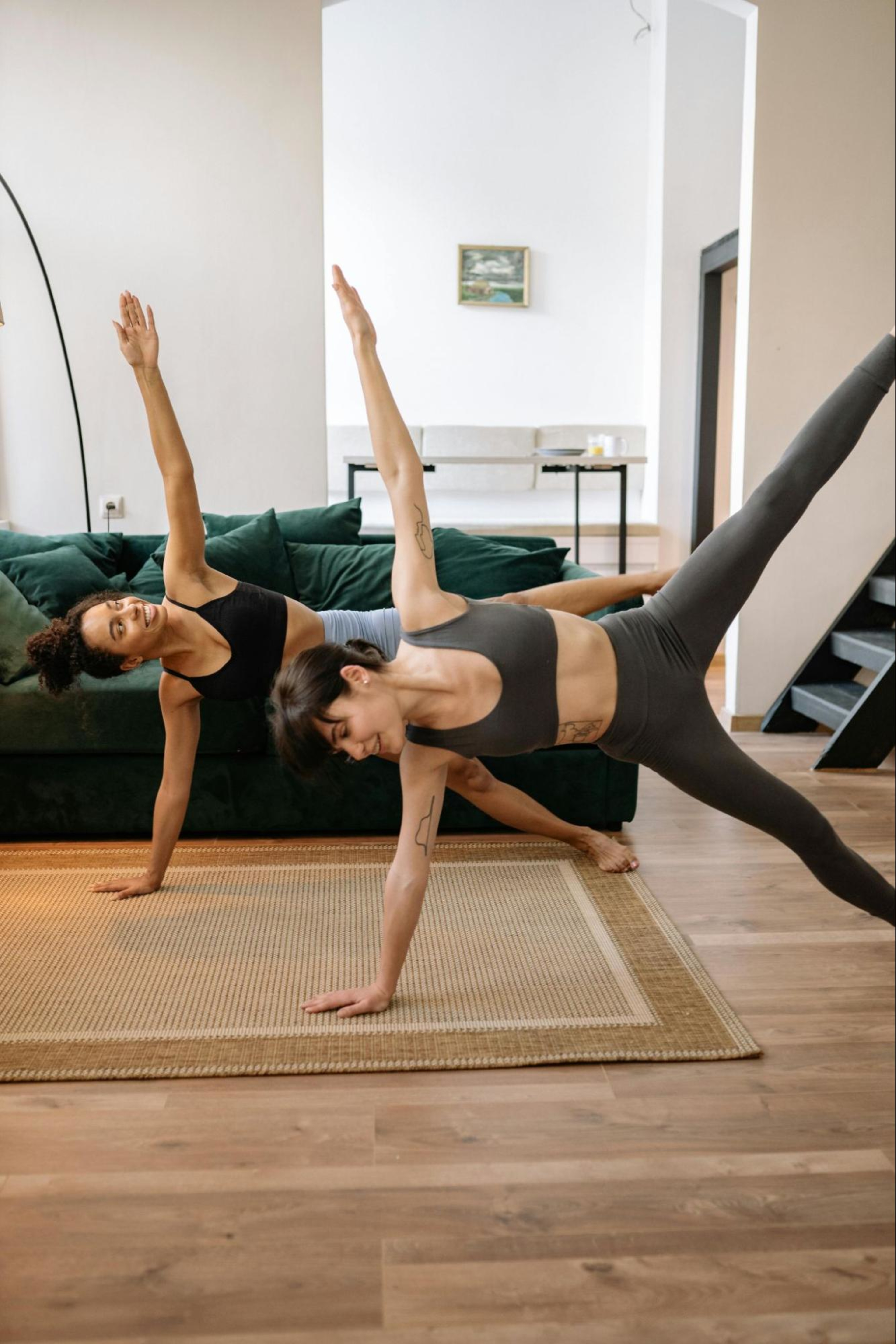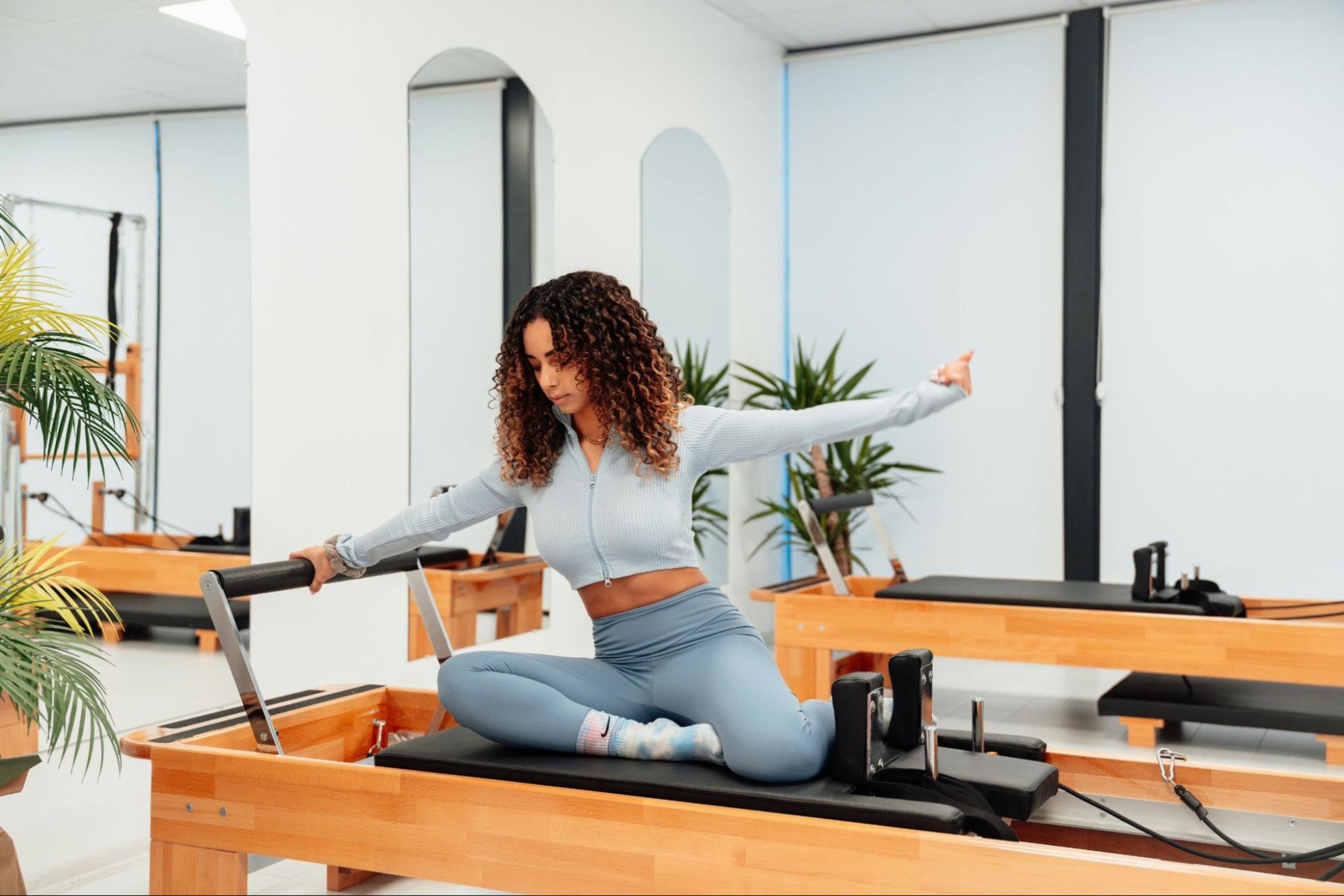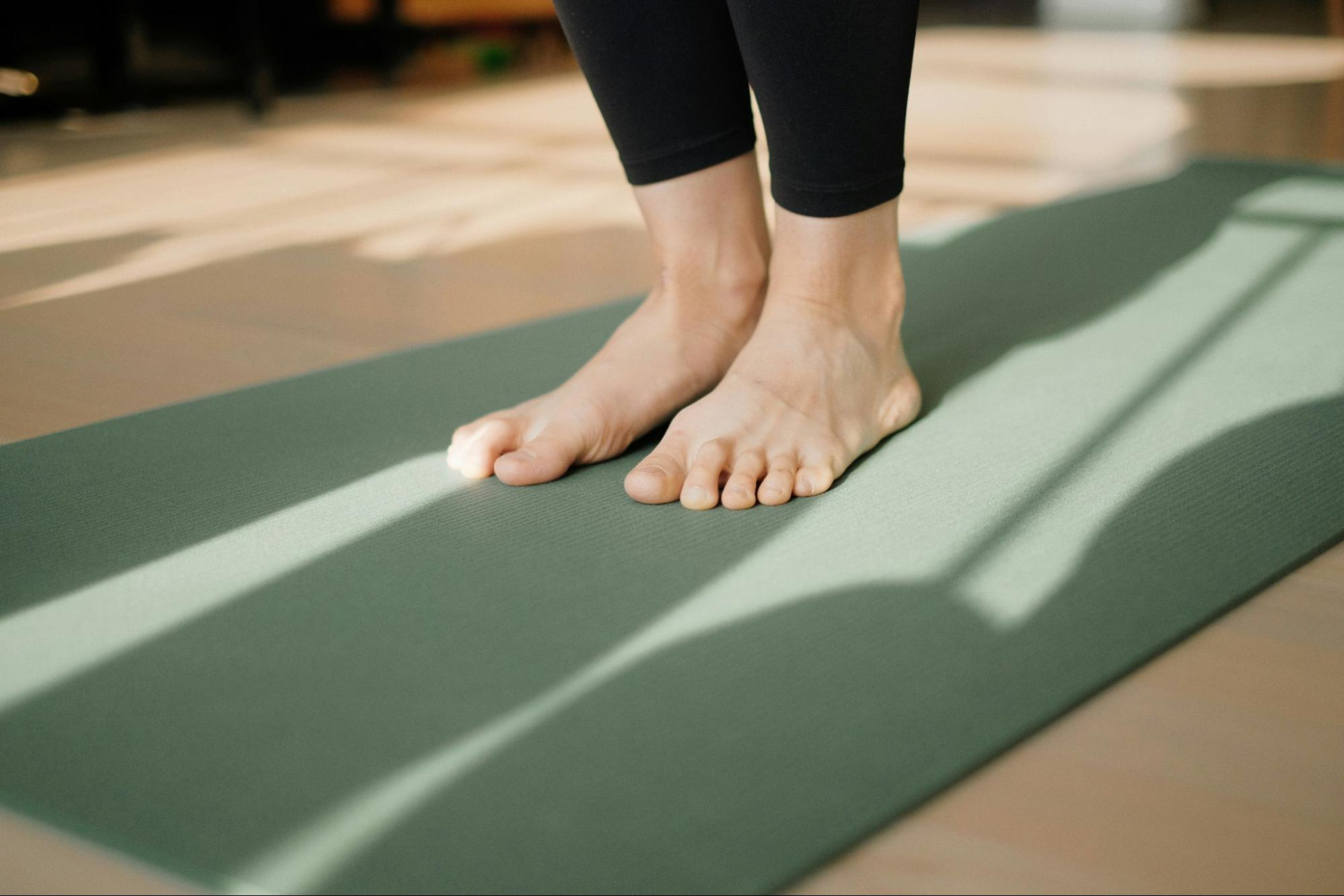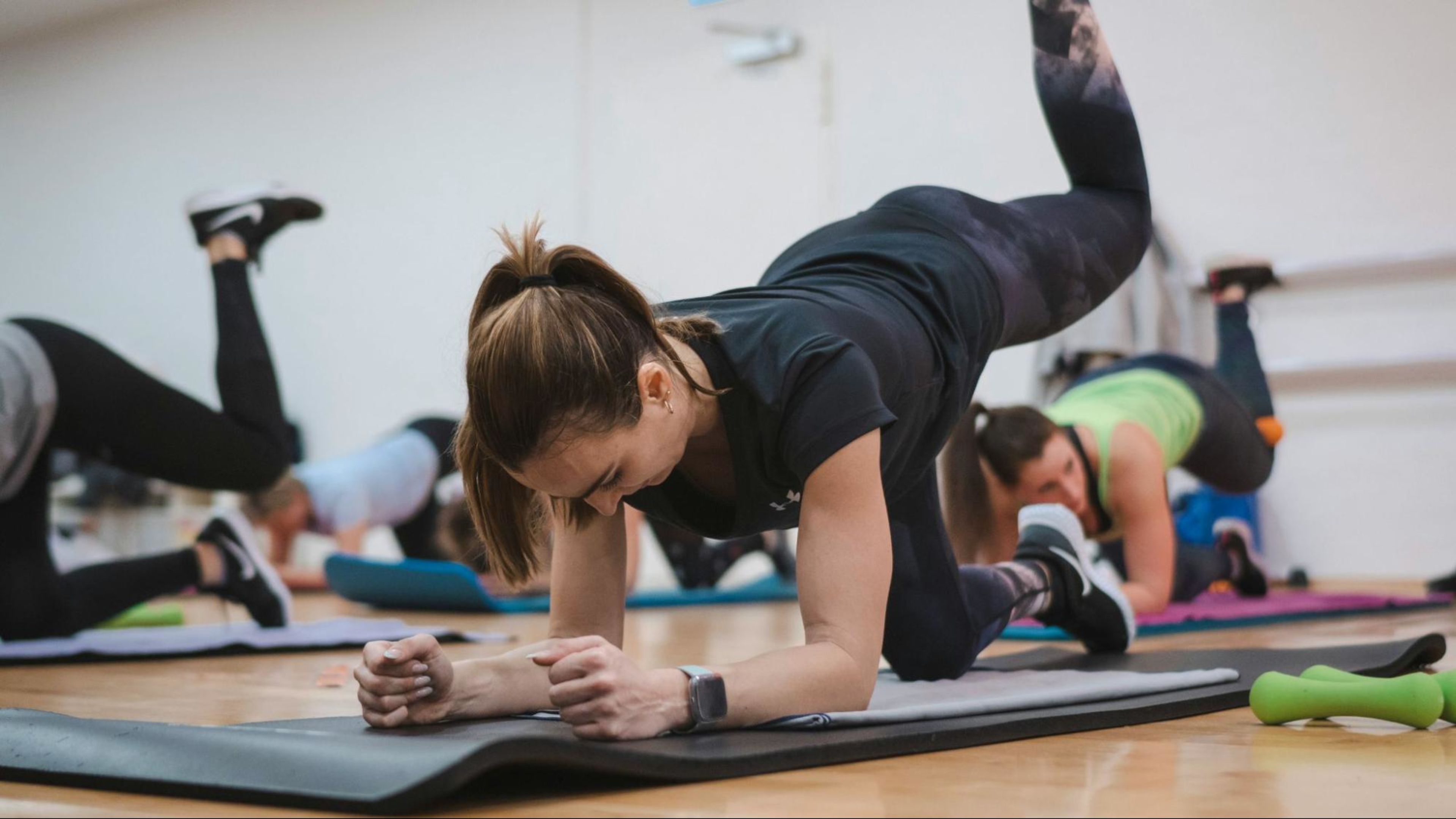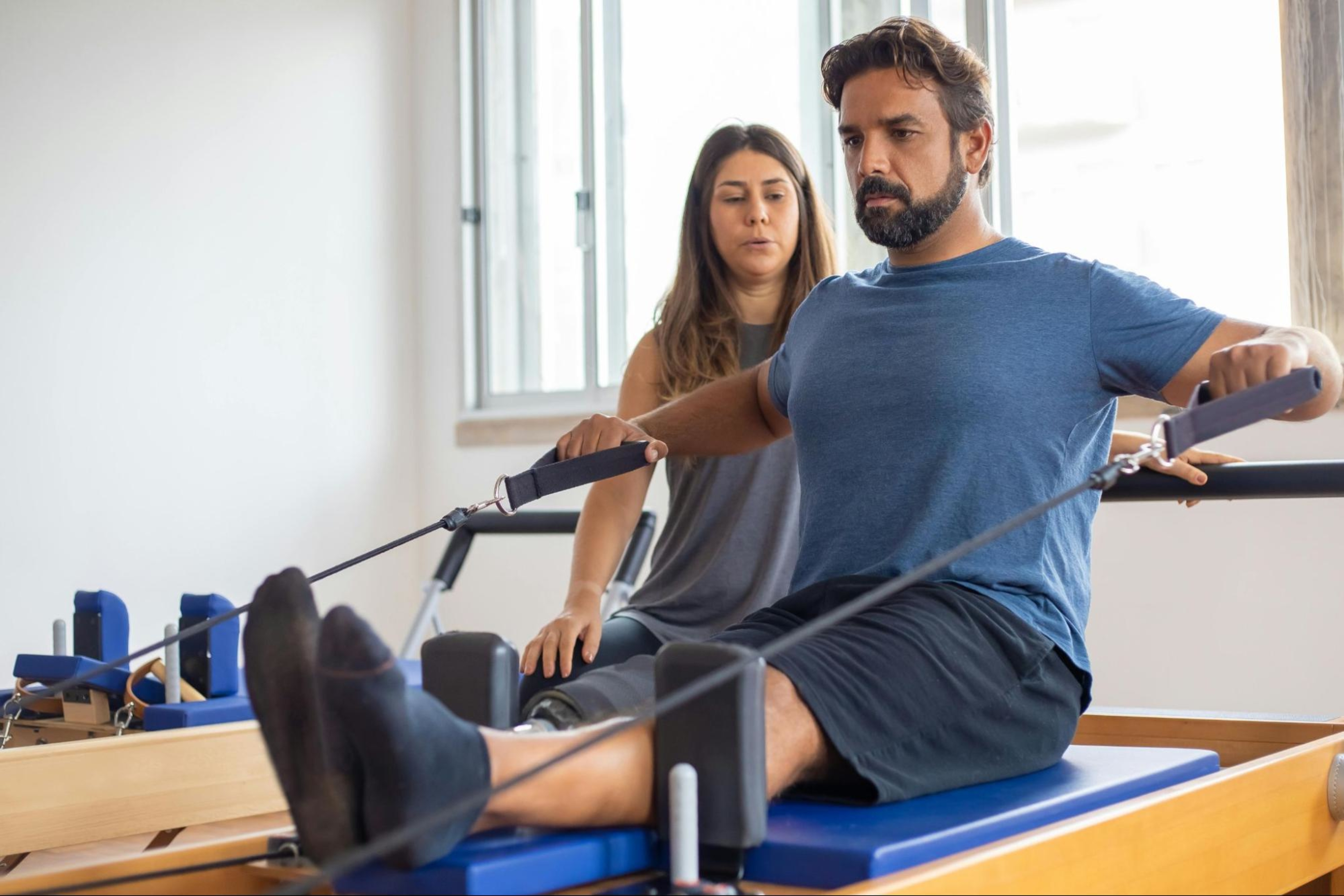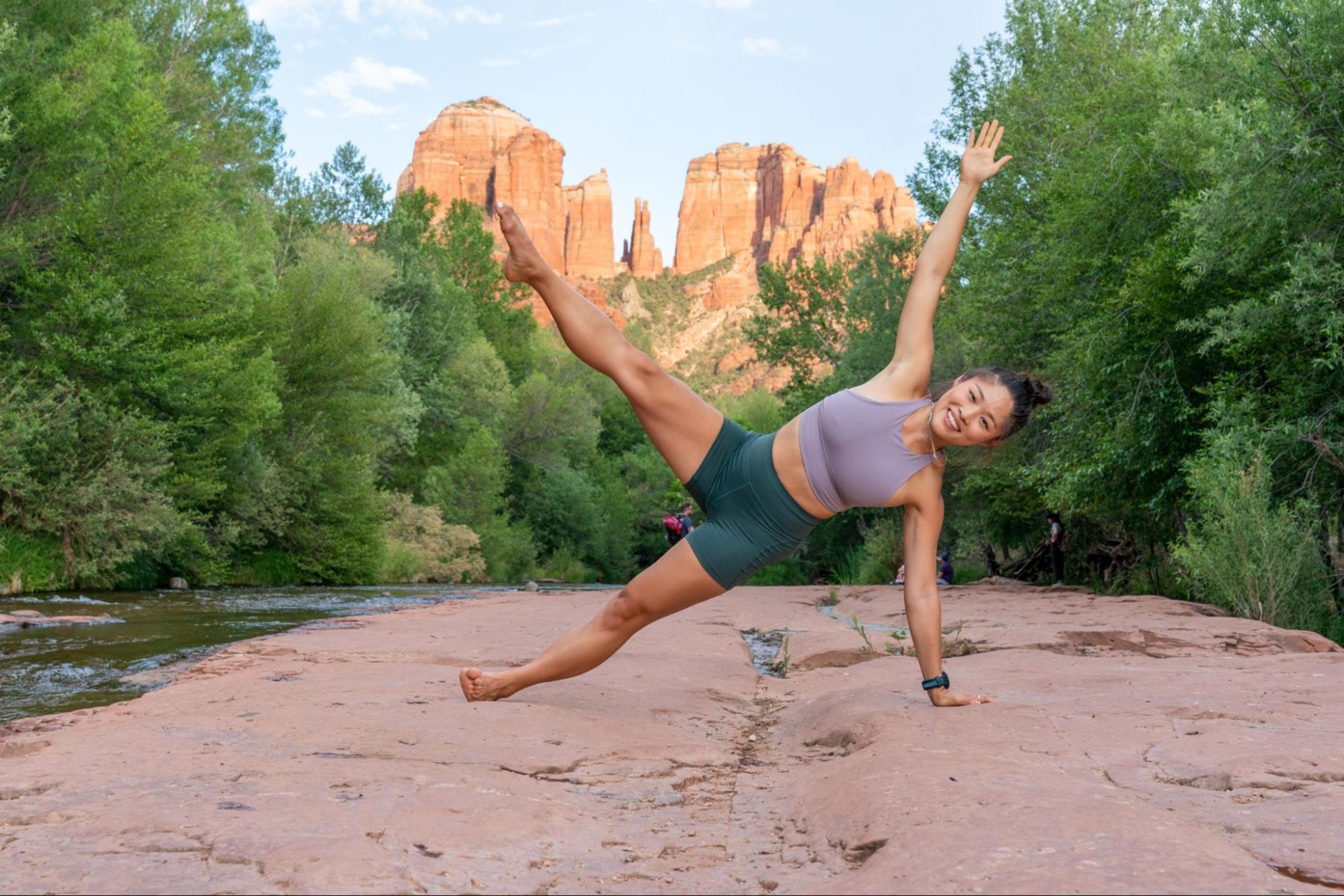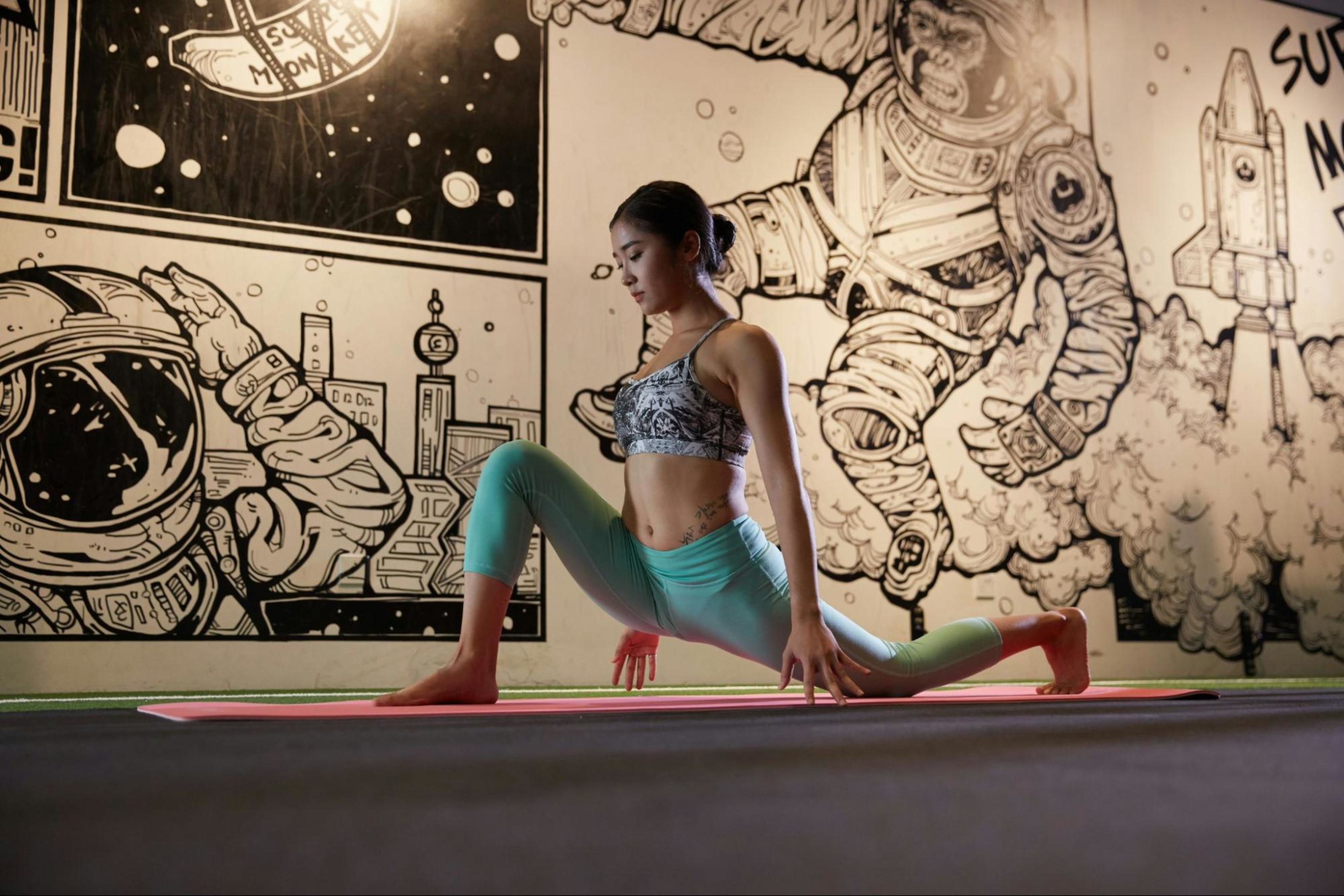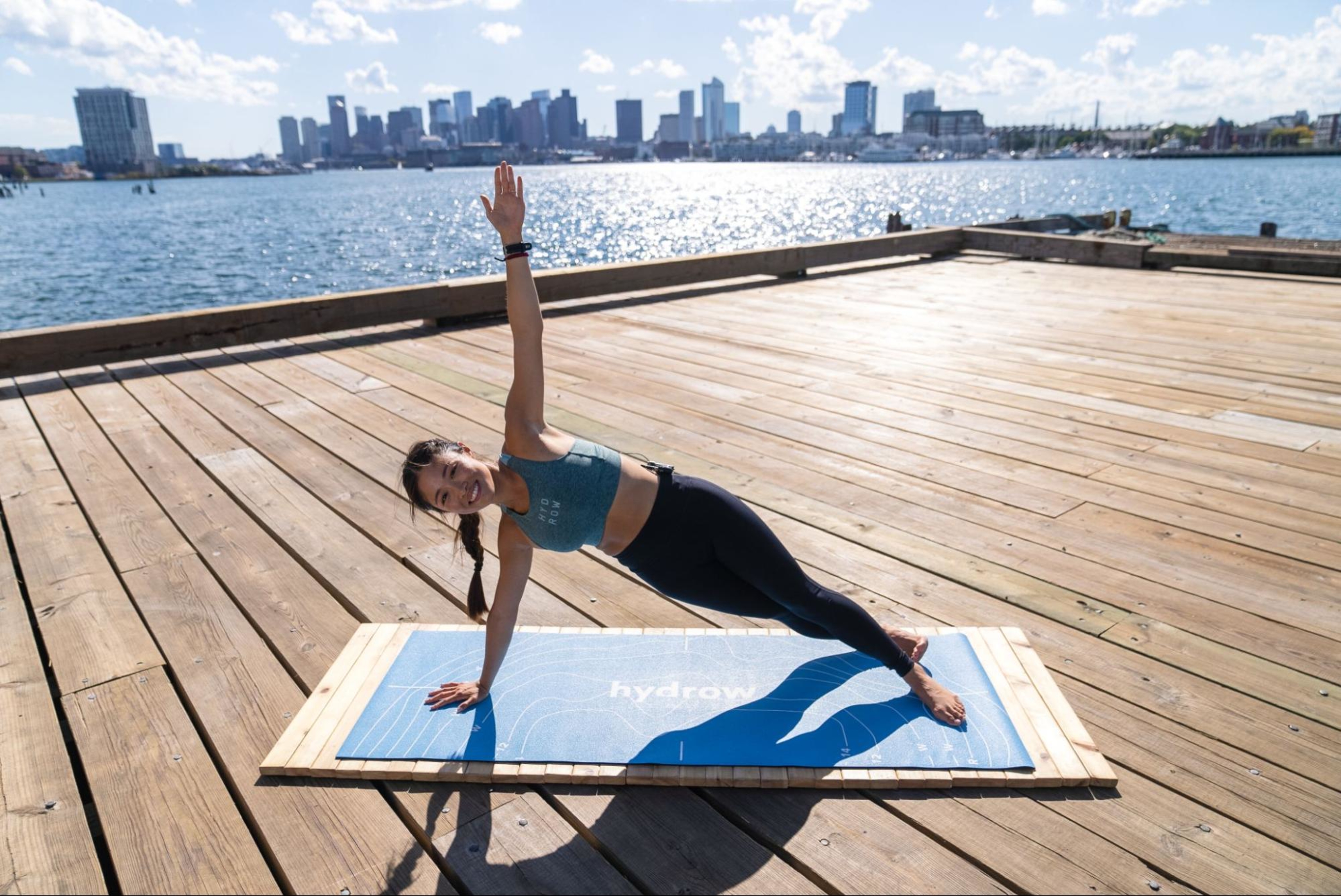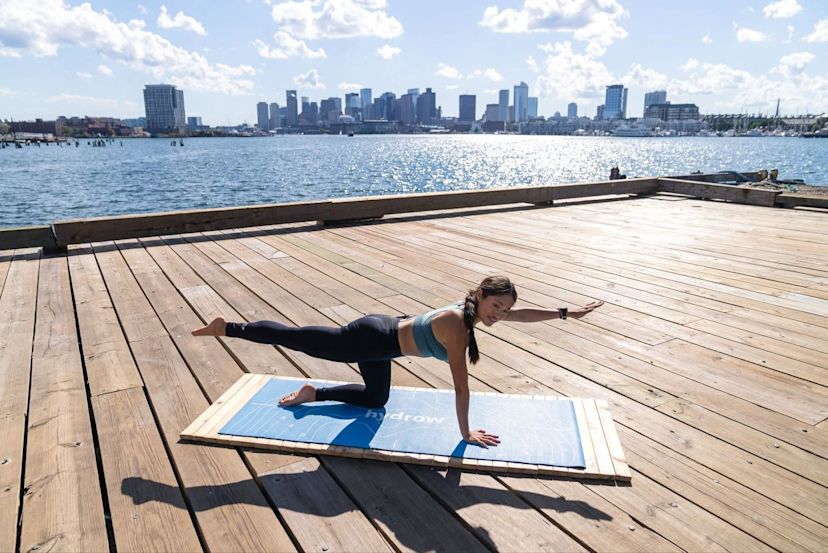Is Pilates Strength Training?
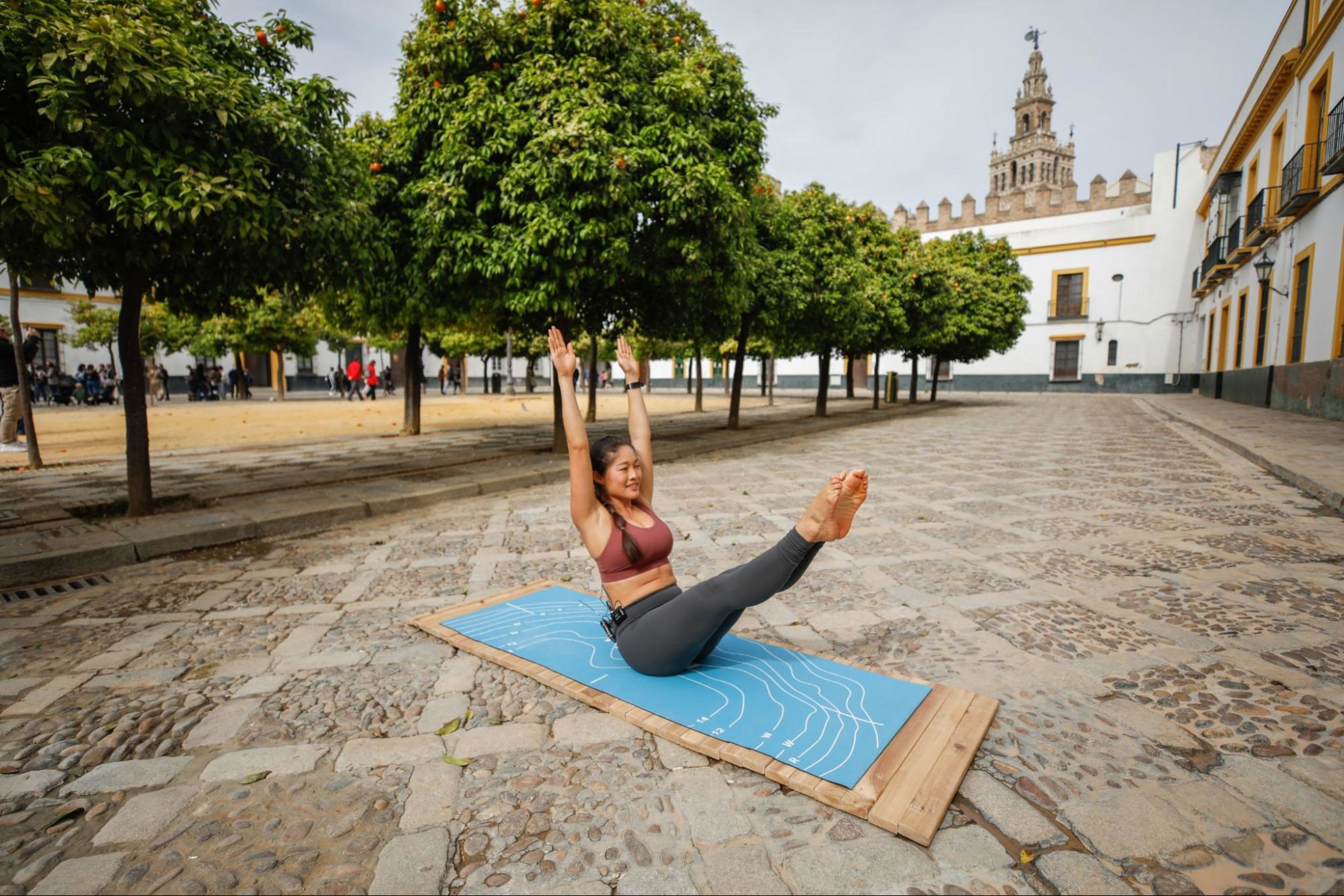
Sometimes it feels like every time we turn around, there’s a new form of exercise being touted as the thing that will help us get fitter and healthier than ever before. But fads always seem to come and go and the methods that are truly the most effective seem to endure.
One such exercise format is Pilates, which was developed by Joseph Pilates in the early 20th century and has only grown in popularity since. But what exactly is Pilates? Is Pilates considered strength training? We’re answering that key question that will help you determine whether to incorporate Pilates into your workout regimen.
Let’s dive in!
Is Pilates considered strength training?
Before we answer this, let’s quickly define both Pilates and strength training. Pilates is an exercise format that can be practiced on a mat using your bodyweight or on a machine called a Reformer, which uses straps and springs to supply added resistance. It uses slow, controlled movements and holds to build core stability, muscle strength, flexibility, and proper spinal alignment.
Strength training, meanwhile, is any form of exercise that challenges the muscles to contract against some form of resistance, such as weights, resistance bands, machines, or your own bodyweight.
So, is Pilates strength training? Definitely. Each movement and hold forces the muscles to engage to the point of fatigue, building strength.
How does Pilates build strength?
Different forms of strength training build strength in different ways. Weightlifting, for example, builds strength by challenging the muscles to move heavy weight in large ranges of motion. Pilates, on the other hand, builds strength through slow, precise, deliberate movements, which force you to use your muscles as opposed to momentum to achieve the different positions.
Pilates also features a lot of isometric holds, which are exercises or positions like a plank, in which your muscles are engaged and forced to stay contracted for a challenging period of time. When you do move quickly in Pilates, it often means many repetitions of small movements, far more than you would likely be doing with weights.
Pilates will sometimes even combine two or more of these modalities, such as in the exercise the Pilates Hundred, in which you are in an isometric hold for your core muscles while moving your arms up and down in tiny pumps for—you guessed it!—100 repetitions.
The benefits of using Pilates as strength training
Now that you know there are a few unique ways that Pilates can build strength, why should you use it as strength training? It comes with some impressive benefits, including:
Better posture and alignment
Improved balance and mobility
Builds lean muscle
Adaptable to any fitness level
Better posture and alignment
The central focus of Pilates is on developing core strength and spinal stability. In the past, it has been used as a tool for athletes and dancers recovering from injuries to help them build a solid foundation of strength and alignment on which to rebuild their powerful bodies.
Since the method leans heavily on building core strength, it promotes good posture and spinal health, which are critical to healthy aging. Proper alignment, especially in the spine, hips, and pelvis, is also developed in Pilates and can help you avoid back and hip injuries.
Improved balance and mobility
Another benefit of having a stronger core is having better balance, which means you’ll be at a lower risk for falls and fractures. What’s more, the focus on slow, deliberate movements that help engage your muscles as opposed to utilizing momentum ensures that the muscles around your joints are getting stronger, improving your functional mobility.

Explore Hydrow’s library of 5,000+ rowing, circuit training, yoga, Pilates, and mobility workouts.
Builds lean muscle
Since Pilates doesn’t utilize weights, it’s not the best strength training method if you are looking to increase the size of your muscles. But what it does do, whether you’re using your bodyweight on a mat or working out on a Reformer, is build lean muscle. The small, repetitive movements and isometric holds increase your time under tension, or the length of time for which your muscles are actively contracted, which has been found to stimulate muscle growth.
Adaptable to any fitness level
Make no mistake about it: Pilates can be incredibly challenging regardless of your fitness level. But the nature of the workout means it is easy for a beginner and an experienced exerciser alike to feel at home and challenged in a Pilates class. Positions are easy to modify and reps are easy to cut back if you need to.
What muscles does Pilates work?
Pilates is a full-body workout. That said, there is a focus on core strengthening and spinal stability, which is the basis on which total-body strength should be built. So, while you can expect to work all your muscles over the course of a Pilates class or workout, you’ll likely feel the most burn in your core.
How to incorporate Pilates into your strength training regimen
Is Pilates good for strength training? Absolutely, and there are a few different ways to incorporate it into your strength training regimen, depending on your goals. Here are a few suggestions:
If you want to build mass, try Pilates on core day. While you can get stronger without ever picking up a weight, growing your muscle mass does require some added resistance. If this is your goal, consider replacing your abs/core workout with Pilates. It will definitely get things burning.
If you want to increase strength and power, try alternating with Pilates. There are three key components that you need if you want to improve your strength and power: Lean muscle mass, stability, and power. Pilates can help you develop lean muscle mass and improve your stability, but it is low-impact and not explosive. For these goals, we suggest alternating Pilates with strength training workouts that incorporate plyometric exercises or others that move your body through a large range of motion.
If you want to build your core and age healthier, try going with all Pilates. If you’re happy with your muscle tone and your primary goals are to improve your core strength, reinforce your spinal alignment, and age with more mobility, Pilates can be your go-to form of strength training.
What are the best Pilates exercises to build muscle strength?
A fourth way to incorporate Pilates into your strength training regimen would be to take some Pilates exercises and add them to your workouts alongside more traditional strength training moves. If you want to give this a shot, here are some of the best Pilates exercises to build muscle strength and the muscle groups they target:
1. The Hundred
What it works: Abs and arms
How to do it:
Lie on your back with legs extended and arms at your sides
Lift your head, neck, and shoulders off the mat.
Extend your legs (or keep them bent) and engage your core. Pulse your arms up and down while breathing:
Inhale for 5 counts, exhale for 5 counts.
Repeat for 10 cycles (100 pulses).
Finish by lowering your head and legs and relaxing.
2. Pilates push-ups
What it works: Arms
How to do it:
Start in plank with hands under shoulders and body straight.
Lower your chest by bending elbows, keeping your core engaged and your body aligned.
Push up to straight arms.
Repeat for 3–10 push-ups.
Rest on knees when done.
3. Roll-ups
What it works: Abs
How to do it:
Start lying flat on your back with arms extended overhead and legs straight.
Inhale and reach your arms forward, chin to chest.
Exhale and slowly roll your spine up, reaching towards your toes.
Inhale as you pause, then exhale and roll back down, vertebra by vertebra.
Repeat for 3–5 roll-ups.

Did you know?
Over 90% of Hydrow members are still active one year later.
4. Criss-cross
What it works: Obliques
How to do it:
Lie on your back with knees bent and hands behind your head.
Lift your head, neck, and shoulders off the mat.
Extend your right leg straight while twisting your torso to bring your left elbow towards your right knee.
Switch sides by extending your left leg and twisting to bring your right elbow towards your left knee.
Repeat for 10–20 criss-crosses.
5. Bridge
What it works: Glutes
How to do it:
Lie on your back with knees bent and feet flat on the mat, hip-width apart.
Engage your core and press your lower back into the mat.
Lift your hips off the mat, squeezing your glutes, until your body forms a straight line from shoulders to knees.
Hold for a moment, then slowly lower your hips back down to the mat.
Repeat for 10–15 bridges.
6. Single-leg stretch
What it works: Legs and abs
How to do it:
Lie on your back with knees bent and grabbing your knees.
Inhale and begin to curl your head, neck, and shoulders off the mat.
Exhale as you continue to curl up, extending one leg to hover above the floor and keeping your lower back in contact with the mat.
Switch legs, extending your left leg and bringing your right knee toward your chest.
Repeat for 10–20 stretches, alternating legs.
7. Toe taps
What it works: Abs
How to do it:
Lie on your back with your knees in the air at a 90-degree angle.
Lift your head, neck, and shoulders off the mat, engaging your core.
Slowly lower your right foot towards the mat, maintaining the knee bend and tapping your toe lightly, keeping your core stable.
Return your right leg to the starting position and repeat with the left foot.
Repeat for 10–20 taps, alternating legs.
8. Side kicks
What it works: Legs
How to do it:
Lie on your side with your body in a straight line and your head resting on your arm.
Lift your top leg to hip height, keeping it straight and aligned with your body.
Kick your leg forward, slightly lower than hip height.
Kick your leg back, maintaining control and not letting your torso move.
Repeat for 10–15 kicks on each side.
9. Side plank
What it works: Obliques
How to do it:
Lie on your side, propping your upper body up on your elbow, keeping your body in a straight line.
Lift your hips off the mat, balancing on your forearm and the side of your bottom foot.
Engage your core, keeping your body straight and avoiding any sagging in your hips.
Hold the position for 15–30 seconds, focusing on stability.
Lower your hips back to the mat and repeat on the other side.
Is Pilates strength training or cardio?
You know by now that Pilates is a powerful form of strength training. And while it will work your muscles to fatigue and you may feel your heart rate spiking at times, Pilates is not really cardio. It doesn’t increase your heart rate and breathing and maintain them at a moderate to high rate for long enough periods to work the cardiovascular system. So, while Pilates can definitely be part of your strength training regimen, it doesn’t double as cardio.
Let’s get stronger!
As you can see, Pilates is an excellent way to build strength while also reaping functional benefits like better spinal alignment, balance, and mobility. If you’re still not sure where to start, we have you covered. Hydrow offers a wide range of Pilates workouts led by world-class Athletes, filmed in stunning locations around the world. Practice on your schedule with expert guidance that helps you build strength, improve mobility, and stay consistent.
Learn more about Hydrow’s Pilates workouts and membership today.
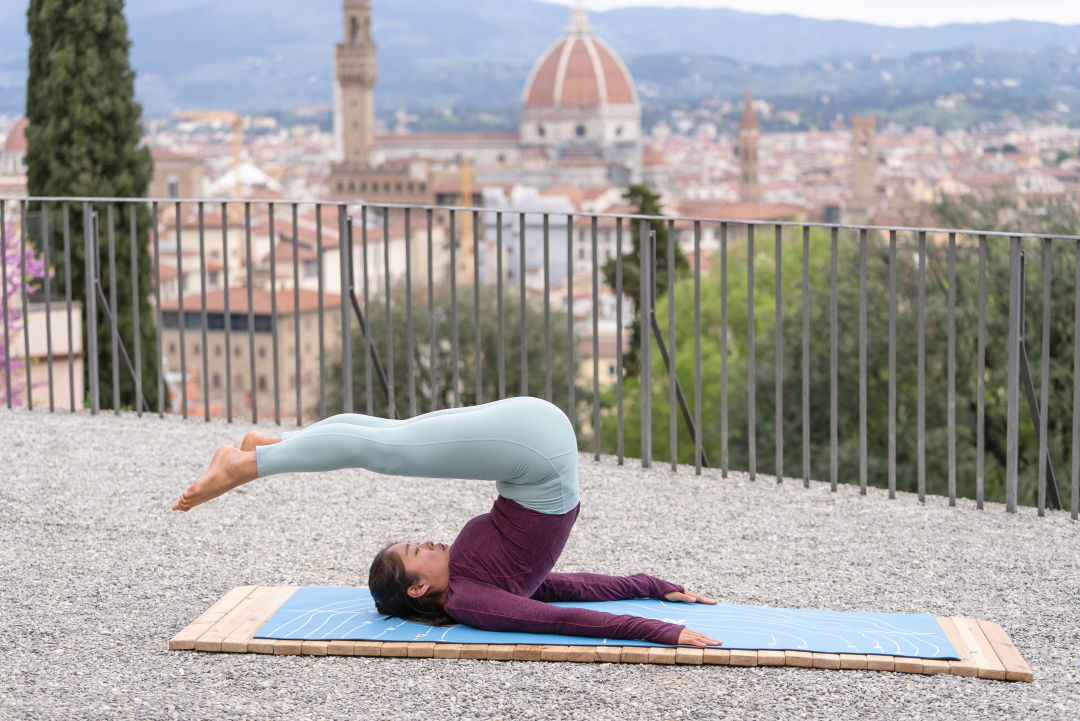
Explore Hydrow’s library of Pilates workouts from around the world.

